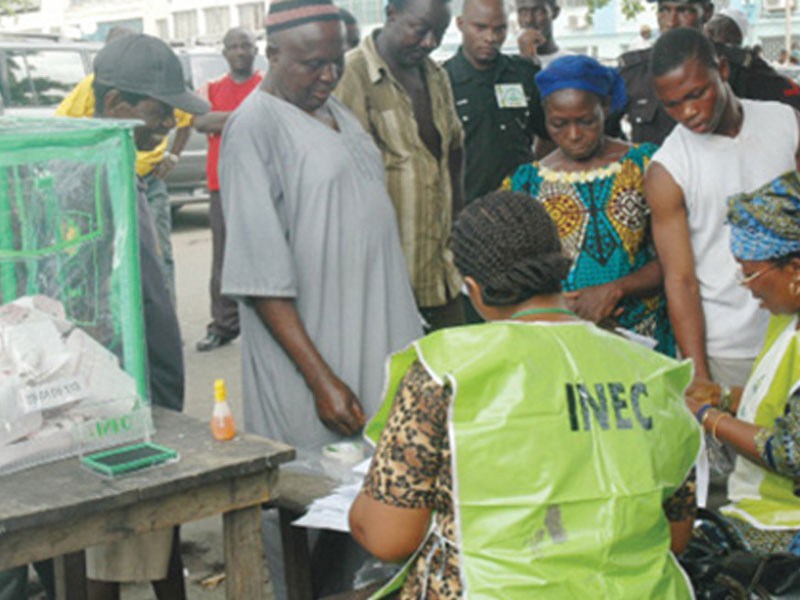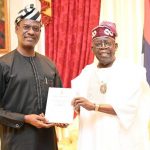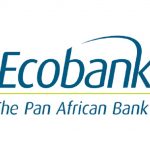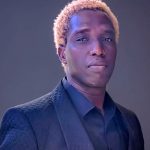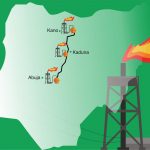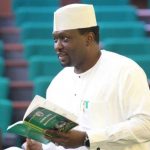Feature/OPED
2019 Presidential Election: Foretelling the Outcome
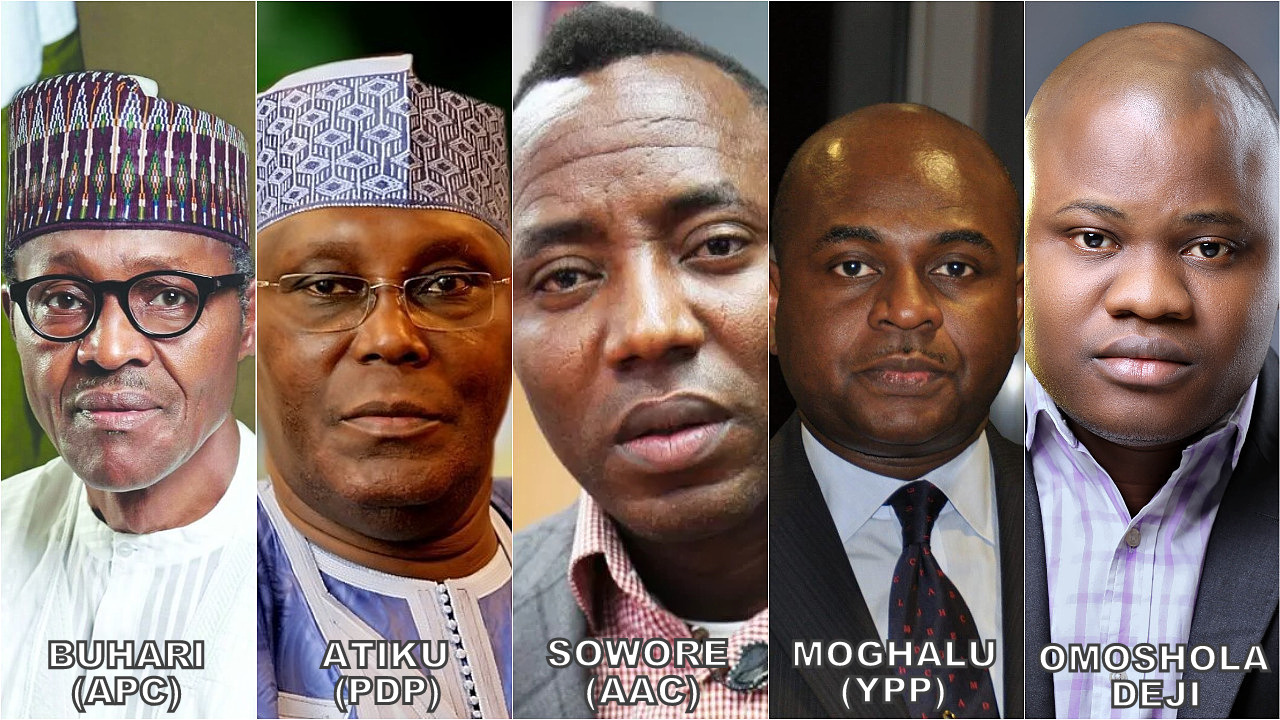
By Omoshola Deji
Election is the recruitment of persons with the largest percentage electorates feel are capable of actualizing their imaginings of an ideal nation.
Nigerians elect their leaders every four years and the time is here. Parties have campaigned; candidates have promised; sociocultural groups have endorsed; observers have arrived; and Nigerians are preparing to elect their President and federal lawmakers on February 16. This piece appraises the election winning determinants to foretell the outcome of the presidential poll.
A brief introduction and clarification is essential at this point. The writer, subsequently titled Pundit, is Nigeria’s election result Nostradamus. Foretelling election’s outcome is a reflection of his political analysis prowess, not an endorsement of any party or candidate. The accuracy of his past forecasts has attracted the media and many Nigerians, home and abroad, to look out for his prediction during elections.
Foretelling an election outcome doesn’t mean the pundit has access to one sacred information or the election winning strategy of any candidate. Assessing candidates’ fortes and flaws to foretell the winner is a common practice in developed nations. This doesn’t mean the pundits are demeaning the electoral process or influencing the election results. Nigerians have already decided who they’ll cast their votes for and nothing – not this prediction – can easily change their minds.
The Candidates
The 2019 presidential election is going to be the most keenly contested in the history of Nigeria, not because there are many contestants, but due to the rise in power struggle and the personality of the top candidates. 73 persons are running, but the election is a two horse race between incumbent President Muhammadu Buhari of the All Progressives Congress (APC) and former Vice-President Atiku Abubakar of the People’s Democratic Party (PDP).
Other leading contestants are Omoyele Sowore of the African Action Congress (AAC); Fela Durotoye of the Alliance for New Nigeria (ANN) and Kinsley Moghalu of the Young Progressive Party (YPP).
Sowore, Durotoye and Moghalu are ‘young’ vibrant newcomers, but their political structures are too weak to win a presidential election in a plural nation like Nigeria. Power and greed made coalition efforts that would have made them a formidable third force fail. Teaming up to support a fellow candidate shouldn’t cause disaffection, if their main desire is to rescue Nigeria from the old order.
The similarity in the background of the two main candidates, Atiku and Buhari, renders ethno-religious based predictions impotent. Unlike in 2015, when a Christian southerner contested against a Muslim northerner, the two leading presidential candidates in 2019 are both Northerners, Fulanis, Muslims and septuagenarians. Both candidates are veteran contestants and have crisscrossed parties. This election is Atiku’s fourth attempt. Buhari won on his fourth attempt in 2015 and wants another term.
Buhari’s Performance and Obstacle
Buhari, like every other incumbent, is contesting against two things: his performance and his opponents. His main opponent, Atiku, has far-reaching networks and has been campaigning vigorously. Unlike candidates who are running for the fame, Atiku’s rigorous campaign is a testimonial that he is running to win. He is leaving no stone unturned, knowing this opportunity may not present itself again as he is aging and power is expected to return to the south, if Buhari wins. Atiku has been working on the electorates’ psyche, reconciling with foes, getting endorsements, and turning his major liabilities into assets. His recent visit to the Unites States (US) was a political masterstroke that revived his diminishing electoral value tainted by corruption.
Nigerians are sharply divided on Buhari’s performance. In all sincerity, both the praise singers and condemners of Buhari’s performance are right. The praise singers are rating Buhari based on the achievements of his predecessors, many of whom score low on the provision of basic amenities, security and socioeconomic development. Buhari has performed satisfactorily when compared with his predecessors. He is reviving the railway, constructing the Second Niger Bridge, building a number of roads, and combating Boko Haram. Buhari has also paid the defunct Nigerian Airways’ pensioners and introduced social incentives such as school feeding, N-Power and Tradermoni, which the opposition has criticized as vote-buying.
The presidential election is partly a referendum on Buhari’s performance. He would earn the votes of people who think he has performed, while those who think otherwise and mindful that the second term of governments are often not better than their first would vote other candidates.
The condemners of Buhari’s performance are rating him based on his inability to fulfil some of his 2015 campaign promises. They are berating him for performing below expectations after raising hopes of Nigerians. Buhari promised restructuring, but backtracked. His appointments were lopsided northwards. Insecurity is rife as bandits, insurgents and herdsmen are carrying out genocidal bloodletting at will. The fight against corruption has been incredibly selective, making Transparency International rank Nigeria the 144 least corrupt nation out of 175. Buhari has serially flouted court orders; persecuted activists and journalists; tolerated the massacre of unarmed IPOB and Shiite members; harassed the legislature and judiciary; ruled in a dictatorial manner; and hounded critics. Basic amenities are either dysfunctional or unavailable, the exchange rate is high, consumables are costly and unemployment is at an alarming rate. Buhari’s performance is unsatisfactory if he’s assessed by the oversweet promises he doled out in 2015. His misrule and incompetence is winning hearts for Atiku.
Atiku’s Challenge
Buhari has reiterated his resolve to further tackle corruption, insecurity and revive the economy, while Atiku boast of capacity to provide jobs, eradicate poverty and resuscitate the economy. One major minus for Atiku is the comment of his former boss, ex-President Olusegun Obabsanjo when their relationship was not cordial. In his book titled My Watch, Obasanjo said “what I did not know, which came out glaringly later, was his parental background which was somewhat shadowy, his propensity to corruption, his tendency to disloyalty, his inability to say and stick to the truth all the time, a propensity for poor judgment, his belief and reliance on marabouts , his lack of transparency, his trust in money to buy his way out on all issues and his readiness to sacrifice morality, integrity, propriety truth and national interest for self and selfish interest”.
Though Obasanjo has reconciled and endorsed Atiku, many Nigerians are still using the statements in ‘My Watch’ to discredit Atiku.
Endorsement Effects
Endorsement still influences voters, even though political parties belittle its effect when they are unable to secure it. People living in the rural areas and traditional societies where the recommendations of leaders are highly revered largely vote based on endorsements. Candidates also use endorsements to convince dissenting voices and undecided voters. Atiku has gotten influential endorsements than Buhari. Leaders and elders of notable regional sociocultural groups, including the Middle Belt Forum (North-Central), Ohanaeze Ndigbo (South-East), PAN Niger Delta Forum (South-South); and the prominent faction of Afenifere (South-West) have all endorsed Atiku. The most shocking endorsement Atiku got was that of the Northern Elders Forum, which has a significant influence on the conservative Muslim Northerners who are largely supporters of Buhari. The Arewa Consultative Forum however gave a counter endorsement in favour of Buhari.
Ruling parties are always the most favoured on endorsements. The opposition PDP’s numerous endorsement is a pointer that the regional leaders distrust APC, or the party simply choose to connect the people directly through the distribution of business aid such as Tradermoni. The latter may not earn Buhari votes. The beneficiaries of Tradermoni are largely sympathizers of their various sociocultural groups which have endorsed Atiku. An Igbo trader who’s aware that Ohaneze Ndigbo endorsed Atiku to end the marginalization of his ethnic group under Buhari would most likely vote Atiku, despite receiving Tradermoni. Sociocultural groups have a way of awakening the ethnic sentiments that’ll make people vote their endorsed candidates. The culture is gradually changing as people are increasingly voting based on personal convictions.
The Generals Influence
When getting less, the APC discredit endorsements, but applaud same when persons or groups back Buhari. 71 retired Military Generals endorsed Buhari for second term. This is a coming against some of the prominent Generals and former Heads of State’s opposition to Buhari’s re-election. Generals Olusegun Obasanjo, Ibrahim Babangida and Theophilus Danjuma are against Buhari, General Yakubu Gowon has been apolitical, while General Abdulsalami Abubakar is the head of the National Peace Committee. Buhari’s rejection by his powerful and influential contemporaries may hinder his win as the Generals, especially Obasanjo, have always determined who becomes President.
The Generals have vast political structures as they were the ones who nurtured almost all the leading political actors in Nigeria presently. Obasanjo is one of the ruling APC’s major nightmares as he is determined to end Buhari’s reign and install PDP’s Atiku. His choice candidates have always emerged, including Buhari in 2015. Obasanjo is well-respected by the international community. His global weight and networks can ruin Buhari, if he’s declared winner based on electoral fraud and post-election conflict arises. Obasanjo is doing his best to ensure Buhari doesn’t win as such will diminished his relevance and retire him from politics.
The Aso Rock Cabal
Aisha Buhari’s statement that her husband’s government had been hijacked by a cabal would make Buhari lose votes. Aisha disclosed at the National Women Leadership Summit that two powerful individuals have been commandeering her husband and preventing him from performing. Buhari denied the allegation, but many Nigerians believe his wife’s statement is a revelation of the goings-on in Aso Rock. The President’s failure to regain public confidence by rejigging his cabinet would make many people vote against him to end the cabal’s reign.
Health Factor
Buhari’s deteriorating health and failing memory would also diminish his votes. Many Nigerians believe Buhari would spend most of his tenure receiving treatment abroad, if he wins. His inability to remember basic things and serial gaffes such as forgetting the year he was sworn-in, referring to the APC gubernatorial candidate in Delta State as senatorial and presidential candidate, as well as lifting the hand of the wrong candidate in Cross River State makes many Nigerians see him has mentally unfit to continue ruling.
Atiku has shown more mental alertness, but his pledge to enrich friends is making him lose public trust. Nigerians may decide to return a sick, dictatorial and incompetent Buhari to power because of Atiku’s corruption tendencies and embracement of crony capitalism – enriching friends through privatization.
Elites Gang-up
The APC intraparty crisis across states and the exit of influential persons from the party may deny Buhari a win. APC was formidable in 2015 than it is now. The party immensely profited from the mass exit of political heavyweights from the then ruling PDP. This largely helped President Buhari defeat then President Jonathan. Most of the heavyweights are back in the PDP and are determined to unseat Buhari. Some of them includes the PDP presidential candidate, Atiku Abubakar; Senate President Bukola Saraki; Governors Samuel Ortom and Aminu Tambuwal of Benue and Sokoto States; House of Representative Speaker, Yakubu Dogara; and ex-Governor Rabiu Kwankwaso of Kano State. The exit of these bigwigs from the APC would certainly not make victory easy for Buhari. The ruling APC tried to make up for this by winning over ex-Governors Godswill Akpabio and Emmanuel Uduaghan of Akwa-Ibom and Delta States. These former governors cannot garner many votes for Buhari. Their influence is limited to their states which are PDP strongholds and majority of the people in the Niger-Delta region are anti Buhari.
The array of political elites that Buhari have been persecuting and prosecuting would also unleash their arsenal to ensure he never gets re-elected. Those affected by Buhari’s unfavourable economic policies and others not profiting from his government would likewise do all possible to make him lose.
The International Community
Atiku’s entry into the US and the foreign condemnation of Buhari’s anti-democratic actions are crucial pointers that the international community would prefer an Atiku Presidency. Buhari’s imperfection must not make one take the international community’s preference as best for the country. Buhari is not getting their support, not because of his underperformance, but because he has resisted dependency and neocolonialism; hindering them from exploiting the nation. The western nations are only friends with governments that allow them have their way and they are renowned for going the extra mile to remove uncontrollable leaders. Kwame Nkruma, Patrice Lumumba and Julius Nyerere are credible lessons. Buhari’s shortcoming is creating an avenue for the West to have their way through Atiku. The PDP campaign to ‘get Nigeria working again’ is coming at a time when the majority is complaining that virtually nothing is working.
INEC and Security
An excellent professional conduct should not be expected from the security agencies and the Independent National Electoral Commission (INEC). The secret midnight meetings allegedly being held by the INEC leadership and Buhari’s henchmen may lead to intentional misconduct by the electoral umpire. The security chiefs would try to appear neutral, but their partisanship would manifest if the election is a tight race and Buhari needs some misconduct to pave way for a rerun or make him win. The heads of the security agencies, especially the police commissioners in many states would most likely turn a blind eye on wrongs done to aid Buhari’s win.
Voting
There are 84,004,084 registered voters in Nigeria. By population ranking, the number of registered voters and persons who have collected their permanent voters card (PVC) across the six geopolitical zones are as follows:
North West: 20,158,100 registered voters, 18,882,854 PVCs collected.
South West: 16,292,212 registered voters, 12,444,594 PVCs collected.
North Central: 13,366,070 registered voters, 11,849,027 PVCs collected.
South South: 12,841,279 registered voters, 11,574,944 PVCs collected.
North East: 11,289,293 registered voters, 10,402,734 PVCs collected.
South East: 10,057,130 registered voters, 9,071,939 PVCs collected.
The above data shows that out of the 84,004,084 persons who registered to vote, only 74,199,092 can vote having collected their PVCs. 9,804,992 are yet to collect theirs. APC’s Buhari comes from the Northwest, while PDP’s Atiku is from the North-East. Both candidates would garner huge votes in each other’s zone, but Buhari would come top. This is largely due to the cult followership Buhari enjoys in the North. Majority of the northern voting population supports Buhari blindly; they believe PDP’s 16 years of misrule is responsible for Buhari’s failings.
Another plus for Buhari is that his party, the APC, controls the largely populated states – Lagos and Kano. Out of the 36 states of the federation, APC is the incumbent government in 23 states, while PDP is the incumbent government in 13. APC is also the incumbent government in majority of the Northern states and the entire 6 states in the Southwest. Atiku would likely defeat Buhari in the North-Central. He would defeat Buhari in the South-South and South-East. Atiku would earn substantial votes in the Southwest, but Buhari would earn more.
Vote Buying
Agents of the two prominent candidates will induce voters with money. People thinking Buhari’s anti-corruption stance would make his team desist from inducing voters would be disappointed. As it is before now, the party stalwarts would utter untruths that the money being shared is not from the Presidency, but from supporters who are passionate about the continuity of Buhari’s government. There would be several I-love-you-more-than-God behaviours during the election. People will voluntarily commit electoral fraud, threaten supporters of rival parties, cause mayhem, and kill to ensure their favourite candidate wins.
The APC and PDP supporters boasting their candidates would win by landslide are just being over emotional. Both candidates have major flaws that can’t make that happen. Atiku is widely considered corrupt, while Buhari is broadly seen as nepotistic and unfit. These negatives limit their chances of winning by landslide. Such win is often earned by candidates with minor flaws.
The Pundit’s Verdict
Buhari’s shortcomings will affect, but can’t hinder his win. The three main determinants of electoral victory in Nigeria are the votes cast, the conducts of the electoral umpire (INEC), and the security agencies, especially the police. Buhari apparently has INEC and the security agencies on his side and would get many votes as a popular candidate, but may need a push. His henchmen will not hesitate to do anything, licit or illicit, to retain power when the chips are down.
Notables like Dele Momodu and prominent institutions such as Williams and Associates, and the Economist Intelligence Unit predicting Buhari would lose did not consider something crucial – recent happenings and Buhari’s arbitrariness. Up to the minute actions of Buhari are pointers that his government would stop at nothing to retain power. The intimidation of voters and staggering electoral fraud that was allegedly perpetrated during the Osun governorship and rerun elections; the reported secret meeting with INEC heads; the alleged political removal of Chief Justice Walter Onnoghen; the untoward display of force by the military across states; and the politically motivated transfer of police commissioners and other top officers are not for nothing. An incumbent government that is obsessed with power cannot put all these strategies in place in an undeveloped democracy and lose.
Nigerians are worried that a partial conduct by INEC and the security agencies may lead to a rerun, the Venezuela situation or foist the Odinga-Kenyetta model on Nigeria. Except God touches the mind of those occupying Aso Rock, relinquishing power to the opposition doesn’t look like what the ruling cabal is willing to do, except Atiku wins by a landslide, which is almost impossible. Against the predictions of Williams and Associates and the Economist, the Pundit foretells that the APC candidate, Muhammadu Buhari, would be declared President-elect.
Omoshola Deji is a political and public affairs analyst. He wrote in via [email protected]
Feature/OPED
Navigating Nigeria’s $1 Trillion Roadmap: Growth Indexes and PR Intelligence That Define Success in 2026

By Nosa Iyamu
As we navigate the threshold of 2026, the Nigerian economic landscape is finally shedding the “survivalist” skin that defined the previous two years. The data from 2025 paints a compelling picture of a nation pivoting toward stability. Headline inflation, which sat at a staggering 34.8% in December 2024, underwent a significant decline through 2025, cooling to 14.45% by November. This disinflationary trend, paired with economic reforms such as the Nigerian Electricity Regulatory Commission’s (NERC) aggressive reforms and strategic shifts in the Oil and Gas sector, has effectively reopened the floodgates for Foreign Direct Investment (FDI). The narrative has shifted from a desperate scramble for survival to a strategic quest for sustainability. Investors who were once hesitant are now looking at Nigeria not as a volatility risk, but as a market undergoing profound structural re-engineering. This transition is marked by a renewed focus on transparency and a commitment to market-driven policies that reward institutional resilience and long-term planning.
Building on the stability achieved last year, 2026 is projected to be a period of “Growth Consolidation.” With GDP expansion forecasted between 4.1% and 4.2% and headline inflation expected to settle into a manageable range of 12.5% to 20%, the mandate for brands should shift. It is no longer about merely surviving the storm of volatility; it is about scaling within high-impact corridors that have been cleared by these macroeconomic reforms. Strategic opportunities are ripening in four key sectors: Energy, driven by the Electricity Act 2023 and NERC’s cost-reflective market reforms; Healthcare, anchored by the landmark $5.1B Bilateral MOU between the U.S. and Nigeria; Financial Services, fueled by post-recapitalization lending power; and the Digital Economy, accelerated by the 5G rollout and the maturity of social commerce. Brands playing in these spaces and other industries must recognize that the consumer of 2026 is more discerning, having been refined by the economic hardships of the past, and will only reward businesses that offer clear value and authentic connection.
Perhaps the most pivotal anchor for 2026 is that $2 billion bilateral health Memorandum of Understanding (MOU) signed between the U.S. and Nigeria. This five-year agreement, which began its full implementation cycle in early 2026, is far more than a healthcare play; it is a massive economic stimulus and a resounding vote of global confidence in Nigeria’s institutional reforms. It signals that Nigeria is ready for high-level international cooperation and that the groundwork for a stable, productive economy is being laid. As we march toward the ambitious goal of a $1 trillion economy by 2030, visibility is no longer the endgame for any serious brand. To survive and thrive during this transition from subsistence to high productivity, brands must be deeply understood. It is about moving from the “top of mind” awareness to “top of heart” resonance, where the brand’s purpose aligns with the aspirations of a nation on the move.
In the fast-evolving communications landscape of 2026, visibility has become a cheap commodity, but clarity is a premium asset. The Public Relations industry has officially entered the era of Narrative Intelligence. Traditional Search Engine Optimization (SEO) is being rapidly superseded by Generative Engine Optimization (GEO). As consumers increasingly rely on AI agents and large language models (LLMs) rather than scrolling through pages of search results, brands must ensure they aren’t just “present” on the web—they must be cited as authoritative, credible voices by AI models. This requires a shift from keyword stuffing to high-context storytelling and data-backed authority. If an AI agent cannot summarize your brand’s value proposition accurately in two sentences, you are effectively invisible to the next generation of digital consumers. Narrative Intelligence is about ensuring your brand’s story is coherent, consistent, and machine-readable across all digital touchpoints.
However, this AI-driven world brings a darker side – the proliferation of Deepfakes and hyper-realistic misinformation. As the 2027 political cycle begins to warm up in late 2026, the Nigerian digital space could become a minefield of synthetic media designed to manipulate public opinion. For brands, this represents a significant reputational risk. PR professionals must now act as “Narrative Bodyguards,” deploying advanced AI detection tools to monitor, detect, and neutralize synthetic media before it erodes brand equity. Authenticity is no longer a buzzword or a marketing slogan; it is a defensive necessity. Brands must lean into “Responsible Communication,” ensuring that every piece of content is verifiable and that their response mechanisms for crisis management are faster than the speed of a viral deepfake. Trust, once lost in this high-speed environment, is nearly impossible to regain.
The era of the “Press Release for the sake of it” is officially dead. In 2026, Nigerian boardrooms are demanding a direct, quantifiable line between PR activity and business impact. This marks the definitive death of vanity metrics. Success is no longer measured by the thickness of a press clipping file or the number of generic “likes” on a social media post. Instead, we are seeing a shift from volume to impact, where the primary KPIs are how a campaign drives customer acquisition, increases investor interest, or improves employee retention. Measurement has shifted focus to quality over quantity; it is about the sentiment of the conversation and the conversion rate of the audience. If your PR strategy does not move the needle on the set measurable objectives, it is considered mere noise. PR is now a performance-driven discipline, integrated deeply into the sales and growth funnels of the modern Nigerian enterprise.
The age of the N100 million celebrity brand ambassador is also rapidly fading. Battle-hardened by years of economic shifts and broken promises, Nigerian consumers are increasingly skeptical of high-gloss, low-substance celebrity endorsements. In 2025, the Creator Economy has professionalized and matured. We will see the ascendancy of Niche Creators—the personal finance expert on TikTok, the sustainable farmer on YouTube, or the tech-policy analyst on Instagram. These voices offer what traditional celebrities cannot: community, deep credibility, and a mastery of their craft. Brands in 2026 will pivot toward long-term “Responsible Communication” partnerships with these creators who speak the hyper-local language of their audience. The “next big creator” is no longer a movie star; they are a subject matter expert with a loyal, high-intent community that values authentic insight over superficial fame.
While we must continue to support and prioritize independent media platforms to maintain democratic health, the reality is that traditional newsrooms continue to shrink under the weight of digital disruption. In response, savvy brands are increasingly becoming their own media houses. “Owned Media”—newsletters, podcasts, proprietary research reports, and custom-built community platforms—is the new frontier for brand storytelling. By owning the platform, brands can ensure their story is not diluted or lost in the noise of a fragmented media landscape. This allows for Direct Empathy, speaking to the consumer’s daily reality without a third-party filter. It provides Narrative Control, which is essential in an era of deepfakes, and grants Data Ownership, allowing brands to deeply understand who is engaging with their story and why. Owned media is the bridge that moves a brand from being seen to being truly understood and must be a strategy for 2026.
The 2026 landscape is a high-stakes arena of immense complexity and opportunity. With the active involvement of global powers like China, Russia, and the USA in trade and commerce, and a renewed national commitment to fighting insecurity to protect the $1 trillion goal, Nigeria is a land of profound transformation. But for a brand to capture this opportunity, it must move beyond the surface-level metrics of the past. Brands must empathize through genuine partnerships, drive cross-sector collaboration, and tell stories that resonate with the Nigerian spirit of resilience. The verdict for the year is clear: Trust is the new currency. In a world of AI-generated noise and economic restructuring, the brands that win will be those that have spent the time to build a foundation of understanding. The mandate for 2026 is simple: Don’t just show up. Ensure your audience knows exactly who you are, what you stand for, and why you are essential to their future.
Nosa Iyamu is the CEO of IVI PR
Feature/OPED
On the Gazetted Tax Laws: What if Dasuki Was Indifferent?
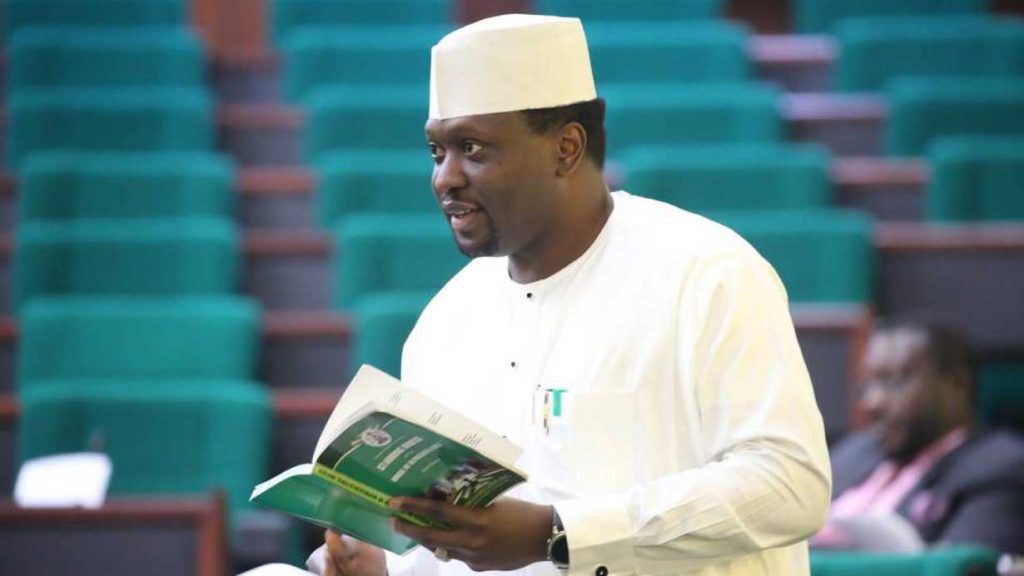
By Isah Kamisu Madachi
For over a week now, flipping through the pages of Nigerian newspapers, social media, and other media platforms, the dominant issue trending nationwide has been the discovery of significant discrepancies between the gazetted version of the tax laws made available to the public and what was actually passed by the Nigerian legislature.
Since this shocking discovery by a member of the House of Representatives, opinions from tax experts, public affairs analysts, activists, civil society organisations, opposition politicians, and professional bodies have been pouring in.
Many interesting events capable of burying the tempo of the debate have recently surfaced in the media, yet the tax law discussion persists due to how deeply entrenched public interest is in the contested laws.
However, while many view the issue from angles such as a breach of public trust, a violation of legislative privilege by the executive council, the passage of an ill-prepared law and so on, I see it from a different, narrower, and governance-centred perspective.
What brought this issue to public attention was an alarm raised by Abdulsammad Dasuki, a member of the House of Representatives from Sokoto State, during a plenary on December 17, 2025. He called the attention of the House to what he identified as discrepancies between the gazetted version of the tax laws he obtained from the Federal Ministry of Information and what was actually debated, agreed upon, and passed on the floors of both the House and the Senate.
He requested that the Speaker ensure all relevant documents, including the harmonised versions, the votes and proceedings of both chambers, and the gazetted copies, are brought before the Committee of the Whole for careful scrutiny. The lawmaker expressed concern over what he described as a serious breach of his legislative privilege.
Beyond that, however, my concern is about how safe and protected Nigerians’ interests are in the hands of our lawmakers at the National Assembly. This ongoing discussion raises a critical question about representation in Nigeria. Does this mean that if Dasuki had also been indifferent and had not bothered to utilise the Freedom of Information Act 2011 to obtain the gazetted version of the laws from the Federal Ministry of Information, take time to study it, and make comparisons, there would have been no cause for alarm from any of Nigeria’s 360 House of Representatives members and 109 senators? Do lawmakers discard the confidence we reposed in them immediately after election results are declared?
This debate should indeed serve a latent function of waking us up to the reality of the glaring disconnect between public interest and the interests of our representatives. The legislature in a democratic setting is a critical institution that goes beyond routine plenaries that are often uninteresting and sparsely attended by the lawmakers. It is meant to be a space for scrutiny, deliberation, and the protection of public interest, especially when complex laws with wide social consequences are involved.
We saw Ali Ndume in a short video clip that recently swept the media, furiously saying during a verbal altercation with Adams Oshiomhole over ambassadorial screening that “the Senate is not a joke.” The Senate is, of course, not a joke, and either should the entire National Assembly be.
Ideally, it should not be a joke to us or to the legislators themselves. Therefore, we should not shy away from discussing how disinterested those entrusted with the task of representing us, and primarily protecting our interests, appear to be in our collective affairs.
It is not a coincidence that even before the current debate around the tax reform law, it had continued to generate controversy since its inception. It also does not take quantum mechanics to understand that something is fundamentally wrong when almost nobody truly understands the law. Thanks to social media, I have come across numerous skits, write-ups, and commentaries attempting to explain it, but often followed by opposing responses saying that the authors either did not understand the law themselves or did not take sufficient time to study it.
The controversy around the gazetted Tax Reform Laws should not end with public outrage or media debates alone. It should force a deeper reflection on how laws are made, checked, and defended in Nigeria’s democracy. A system that relies on the alertness of one lawmaker to prevent serious legislative discrepancies is not a resilient or reliable system. Representation cannot be occasional and vigilance cannot be optional.
Nigerians deserve a legislature that safeguards their interests, not one that notices breaches only when a few individuals choose to be different and look closely. If this ongoing debate does not lead to formidable internal checks and a renewed sense of responsibility among lawmakers, then the problem is far bigger than a flawed gazette. When legislative processes fail, it is ordinary Nigerians who bear the cost through policies they did not scrutinize and consequences they did not consent to.
Isah Kamisu Madachi is a public policy enthusiast and development practitioner. He writes from Abuja and can be reached via: [email protected]
Feature/OPED
After the Capital Rush: Who Really Wins Nigeria’s Bank Recapitalisation?
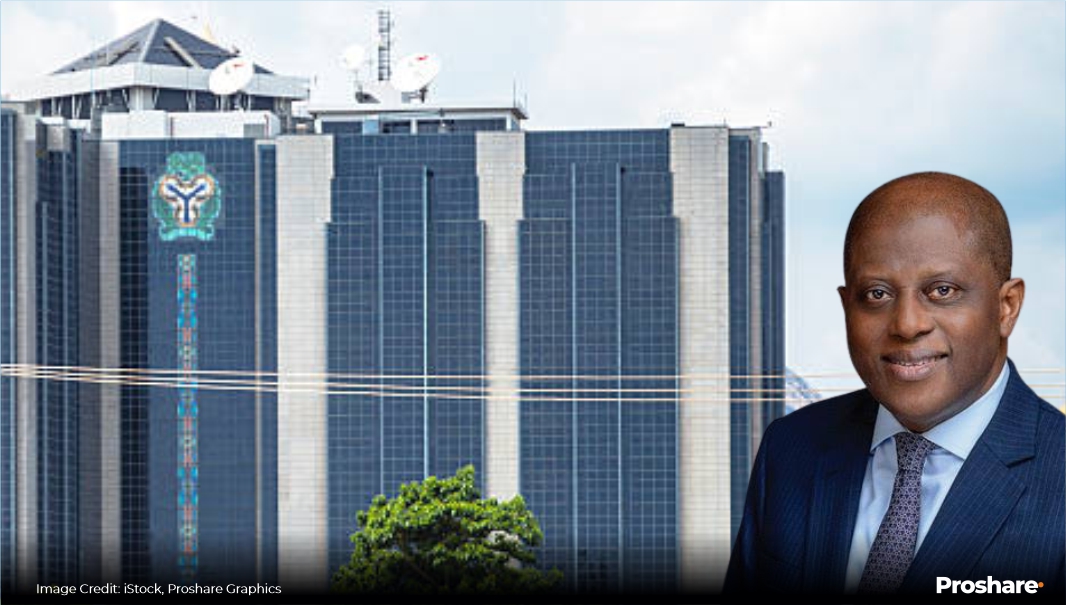
By Blaise Udunze
By any standard, Nigeria’s ongoing bank recapitalisation exercise is one of the most consequential financial sector reforms since the 2004-2005 consolidation that shrank the number of banks from 89 to 25. Then, as now, the stated objective was stability to have stronger balance sheets, better shock absorption, and banks capable of financing long-term economic growth.
The Central Bank of Nigeria (CBN), in 2024, mandated a sweeping recapitalisation exercise compelling banks to raise substantially higher capital bases depending on their license categories. The categorisation mandated that every Tier-1 deposit money bank with international authorization is to warehouse N500 billion minimum capital base, and a national bank must have N200 billion, while a regional bank must have N50 billion by the deadline of 31st March 2026. According to the apex bank, the objectives were to strengthen resilience, create a more robust buffer against shocks, and position Nigerian banks as global competitors capable of funding a $1 trillion economy.
But in the thick of the race to comply and as the dust gradually settles, a far bigger conversation has emerged, one that cuts to the heart of how our banking system works. What will the aftermath of recapitalisation mean for Nigeria’s banking landscape, financial inclusion agenda, and real-sector development?
Beyond the headlines of rights issues, private placements, and billionaire founders boosting stakes, every Nigerians deserve a sober assessment of what has changed, and what still must change, if recapitalisation is to translate into a genuinely improved banking system.
The points are who benefits most from its evolution, and whether ordinary Nigerians will feel the promised transformation in their everyday financial lives, because history has taught us that recapitalisation is never a neutral policy. The fact remains that recapitalization creates winners and losers, restructures incentives, and often leads to unintended outcomes that outlive the reform itself.
Concentration Risk: When the Big Get Bigger
Recapitalisation is meant to make banks stronger, and at the same time, it risks making them fewer and bigger, concentrating power and risks in an ever-narrowing circle. Nigeria’s Tier-1 banks, those already controlling roughly 70 percent of banking assets, are poised to expand further in both balance sheet size and market influence. This deepens the divide between the “haves” and “have-nots” within the sector.
A critical fallout of this exercise has been the acceleration of consolidation. Stronger banks with ready access to capital markets, like Access Holdings and Zenith Bank, have managed to meet or exceed the new thresholds early by raising funds through rights issues and public offerings. Access Bank boosted its capital to nearly N595 billion, and Zenith Bank to about N615 billion.
In contrast, banks that lack deep pockets or the ability to quickly mobilise investors are lagging. The results always show that the biggest banks raise capital faster and cheaper, while smaller banks struggle to keep pace.
As of mid-2025, fewer than 14 of Nigeria’s 24 commercial banks met the required capital base, meaning a significant number were still scrambling, turning to rights issues, private placements, mergers, and even licensing downgrades to survive.
The danger here is not merely numerical. It is systemic: as capital becomes more concentrated, the banking system could inadvertently mimic oligopolistic tendencies, reducing competition, narrowing choices for customers, and potentially heightening systemic risk should one of these “too-big-to-fail” institutions falter.
Capital Flight or Strategic Expansion? The Foreign Subsidiary Question
One of the most contentious aspects of the recapitalisation aftermath has been the deployment of newly raised capital, especially its use outside Nigeria. Several banks, flush with liquidity from rights issues and injections, have signalled or executed investments in foreign subsidiaries and expansions abroad, like what we are experiencing with Nigerian banks spreading their tentacles to the Ivory Coast, Ghana, Kenya, and beyond. Zenith Bank’s planned expansion into the Ivory Coast exemplifies this outward push.
While international diversification can be a sound strategic move for multinational banks, there is an uncomfortable optics and developmental question here: why is Nigerian money being deployed abroad when millions of Nigerians remain unbanked or underbanked at home?
According to the World Bank, a large number of Nigeria’s adult population still lack access to formal financial services, while millions of SMEs, micro-entrepreneurs, and rural households remain on the edge, underserved by traditional banks that now chase profitability and scale.
Of a truth, redirecting Nigerian capital to foreign markets may deliver shareholder returns, but it does little in the short term to advance domestic financial inclusion, poverty reduction, or grassroots economic participation. The optics of capital flight, even when legal and strategic, demand scrutiny, especially in a nation still struggling with deep regional and demographic disparities.
Impact on Credit and the Real Economy
For the ordinary Nigerian, the most important question is simple: will recapitalisation make credit cheaper and more accessible?
History suggests the answer is not automatic. The tradition in Nigeria’s bank system is mainly to protect returns, and for this reason, many banks respond to higher capital requirements by tightening lending standards, raising interest rates, or focusing on low-risk government securities rather than private-sector loans, because raising capital is expensive, and banks are profit-driven institutions. Small and medium-sized enterprises (SMEs), often described as the engine of growth, are usually the first casualties of such risk aversion.
If recapitalisation results in stronger balance sheets but weaker lending to the real economy, then its benefits remain largely cosmetic. The economy does not grow on capital adequacy ratios alone; it grows when banks take measured risks to finance production, innovation, and consumption.
Retail Banking Retreat: Handing the Mass Market to Fintechs?
In recent years, we have witnessed one of the most striking shifts, or a gradual retreat of traditional banks from mass retail banking, particularly low-income and informal customers.
The question running through the hearts of many is whether Nigerian banks are retreating from retail banking, leaving space for fintech disruptors to fill the void.
In recent years, players like OPAY, Moniepoint, Palmpay, and a host of digital financial services arms have become de facto retail banking platforms for millions of Nigerians. They provide everyday payment services, wallet functionalities, micro-loans, and QR-enabled commerce, areas traditional banks once dominated. This trend has accelerated as banks chase corporate clients where margins are higher and risk profiles perceived as more manageable. The true picture of the financial landscape today is that the fintechs own the retail space, and banks dominate corporate and institutional finance. But it is unclear or uncertain if this model can continue to work effectively in the long term.
Despite the areas in which the Fintechs excel, whether in agility, product innovation, and customer experience, they still rely heavily on underlying banking infrastructure for liquidity, settlement, and regulatory compliance. Should the retail banking ecosystem become split between digital wallets and corporate corridors, rather than being vertically integrated within banks, systemic liquidity dynamics and financial stability could be affected.
Nigerians deserve a banking system where the comforts and conveniences of digital finance are backed by the stability, regulatory oversight, and capital strength of licensed banks, not a system where traditional banks withdraw from retail, leaving unregulated or lightly regulated players to carry that mantle.
Corporate Governance: When Founders Tighten Their Grip
The recapitalisation exercise has not been merely a technical capital-raising exercise; it has become a theatre of power plays at the top. In several banks, founders and major investors have used the exercise to increase their stakes, concentrating ownership even as they extol the virtues of financial resilience.
Prominent founders, from Tony Elumelu at UBA to Femi Otedola at First Holdco and Jim Ovia at Zenith Bank, have all been actively increasing their shareholdings. These moves raise legitimate questions about corporate governance when founders increase control during a regulatory exercise. Are they driven by confidence in their institutions, or are they fortifying personal and strategic influence amid industry restructuring?
Though there might be nothing inherently wrong with founders or shareholders demonstrating faith in their institutions, one fact remains that the governance challenge lies not simply in who holds the shares, but how decisions are made and whose interests are prioritised. Will banks maintain robust internal checks and balances, ensuring that capital deployment aligns with national development goals? The question is whether the CBN is equipped with adequate supervisory bandwidth and tools to check potential excesses if emerging shareholder concentrations translate into undue influence or risks to financial stability. These are questions that transcend annual reports; they strike at the heart of trust in the system.
Regional Disparity in Lending: Lagos Is Not Nigeria
One of the persistent criticisms of Nigerian banking is regional lending inequality. It has been said that most bank loans are still overwhelmingly concentrated in Lagos and the Southwest, despite decades of financial deepening in this region; large swathes of the North, Southeast, and other underserved regions receive disproportionately smaller shares of credit. This imbalance not only undermines inclusive growth but also fuels perceptions of economic exclusion.
Recapitalisation, in theory, should have enhanced banks’ capacity to support broader economic activity. Yet, the reality remains that loans and advances are overwhelmingly concentrated in economic hubs like Lagos.
The CBN must deploy clear incentives and penalties to encourage geographic diversification of lending. This could include differentiated capital requirements, credit guarantees, or tax incentives tied to regional loan portfolios. A recapitalised banking system that does not finance national development is a missed opportunity.
Cybersecurity, Staff Welfare, and the Technology Deficit
Beyond balance sheets and brand expansion, there is a human and technological dimension to the banking sector’s challenge. Fraud remains rampant, and one of the leading frustrations voiced by Nigerians involves failed transactions, delayed reversals, and poor digital experience. Banks can raise capital, but if they fail to invest heavily in cybersecurity, fraud detection, staff training, and welfare, the everyday customer will continue to view the banking system as unreliable.
Nigeria’s fintech revolution has thrived precisely because it has pushed incumbents to become more customer-centric, agile, and tech-savvy. If banks now flush with capital don’t channel a portion of those funds into robust IT systems, workforce development, fraud mitigation, and seamless customer service, then the recapitalisation will have achieved little beyond stronger balance sheets. In short, Nigerians should feel the difference, not merely in stock prices and market capitalisation, but in smooth banking apps, instant reversals, responsive customer care, and secure platforms.
The Banks Left Behind: Mergers, Failures, or Forced Restructuring?
With fewer than half the banks having fully complied with the recapitalisation requirements deep into 2025, a pressing question is: what awaits those that lag? Many banks are still closing capital gaps that run into hundreds of billions of naira. According to industry estimates, the total recapitalisation gap across the sector could reach as much as N4.7 trillion if all requirements are strictly enforced.
Banks that fail to meet the March 2026 deadline face a few options:
– Forced M&A. Regulators could effectively compel weaker banks to merge with stronger ones, echoing the consolidation wave of 2005 that reduced the sector from 89 to 25 banks.
– License downgrades or conversions. Some banks may choose to operate at a lower license category that demands a smaller capital base.
– Exits or closures. In extreme cases, banks that can neither raise capital nor find a merger partner might be forced out of the market.
This regulatory pressure should not be construed merely as punitive. It is part of the CBN’s broader architecture of ensuring that only solvent, well-capitalised, and risk-prepared institutions operate. However, the transition must be managed carefully to prevent contagion, protect depositors, and preserve confidence.
Why Are Tier-1 Banks Still Chasing Capital?
Perhaps the most intriguing puzzle is why some Tier-1 banks, long regarded as strong and profitable, are aggressively raising capital. Even banks thought to be among the strongest, such as UBA, First Holdco, Fidelity, GTCO, and FCMB, have struggled to close their capital gaps. UBA, for instance, succeeded in raising around N355 billion toward its N500 billion target at one point and planned additional rights issues to bridge the remainder.
This reveals another reality that capital is not just numbers on paper; it is investor confidence, market appetite, and macroeconomic stability.
One can also say that the answer lies partly in ambition to expand into new markets, infrastructure financing, and compliance with stricter global standards.
However, it also reflects deeper structural pressures, including currency depreciation eroding capital, rising non-performing loans, and the substantial funding required to support Nigeria’s development needs. Even giants are discovering that yesterday’s capital is no longer sufficient for tomorrow’s challenges.
Reform Without Deception
As the Nigerian banking sector recapitalization exercise comes to a close by March 31, 2026, the ultimate test will be whether the reforms deliver on their transformational promise.
Some of the concerns in the minds of Nigerians today will be to see a system that supports inclusive growth, equitable credit distribution, world-class customer service, and resilient financial intermediation. Or will we see a sector that, despite larger capital bases, still reflects old hierarchies, geographic biases, and operational friction? The cynic might say that recapitalisation simply made big banks bigger and empowered dominant shareholders.
But a more hopeful perspective invites stakeholders, including regulators, customers, civil society, and bankers themselves, to co-design the next chapter of Nigerian banking; one that balances scale with inclusion, profitability with impact, and stability with innovation. The difference will be made not by press releases or shareholder announcements, but by deliberate regulatory action and measurable improvements in how banks serve the economy.
For now, the capital has been raised, but the true capital that counts is the confidence Nigerians place in their banks every time they log into an app, make a transfer, or deposit their life’s savings. Only when that trust is visible in everyday experience can we say that recapitalisation has truly succeeded.
Blaise, a journalist and PR professional, writes from Lagos and can be reached via: [email protected]
-

 Feature/OPED6 years ago
Feature/OPED6 years agoDavos was Different this year
-
Travel/Tourism9 years ago
Lagos Seals Western Lodge Hotel In Ikorodu
-

 Showbiz3 years ago
Showbiz3 years agoEstranged Lover Releases Videos of Empress Njamah Bathing
-

 Banking8 years ago
Banking8 years agoSort Codes of GTBank Branches in Nigeria
-

 Economy3 years ago
Economy3 years agoSubsidy Removal: CNG at N130 Per Litre Cheaper Than Petrol—IPMAN
-

 Banking3 years ago
Banking3 years agoFirst Bank Announces Planned Downtime
-

 Banking3 years ago
Banking3 years agoSort Codes of UBA Branches in Nigeria
-

 Sports3 years ago
Sports3 years agoHighest Paid Nigerian Footballer – How Much Do Nigerian Footballers Earn



